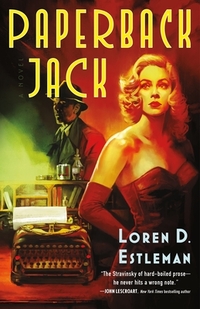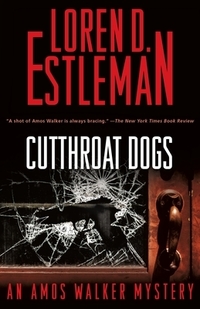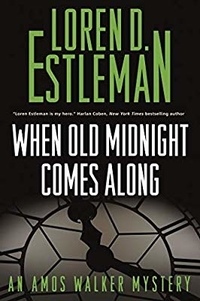City Walls by Loren D. Estleman
 Friday, March 31, 2023 at 11:53PM
Friday, March 31, 2023 at 11:53PM 
Published by Forge Books on April 4, 2023
Amos Walker novels are a throwback to the days when detective stories were tight, plots were smart, and snappy dialog made readers think “wish I’d said that.” Loren D. Estleman turns them out at a steady rate and never misses.
Emmett Yale made himself rich by building electric self-driving cars, although he’s still working the bugs out of the self-driving part. His stepson, Lloyd Lipton, was shot by a sniper from a highway overpass while driving a classic Stingray. The shooter, Melvin Weatherall, was arrested. Disagreeing with the theory of the judge who granted bail to Weatherall, Yale believes his son wasn’t the random victim of a disgruntled gun owner who was taking out his animosity toward wealthy people by shooting sports car enthusiasts.
Lipton knew that Yale added to his fortune by using his inside knowledge of his own financial shenanigans to make a killing in the stock market. Yale believes that Lipton sold his knowledge of Yale’s unlawful behavior to Clare Strickling. Yale’s head of security, Gabe Parrish, caught Strickling stealing trade secrets while Strickling was still employed by Yale’s car company. Yale wants Amos to prove that Strickling hired Weatherall to kill Lipton.
As is common in novels of noir, the first murder is not the last. The most dramatic killing occurs after Walker tails Strickland to a private airfield. Walker assumes that a portfolio Strickland is carrying is stuffed with cash that Strickland intends to take on a clandestine flight to Canada. Before Strickland can leave the ground, however, someone points a prop plane at him and lets it taxi. Walker watches the prop tear Strickland to shreds.
Walker’s investigation should probably end at that point, but Walker lets no mystery go unsolved. Why did Weatherall kill Lipton? Who killed Strickland and why? Walker’s investigation includes an interview with the beautiful Palm Volker, a pilot and partner in the private airfield where Strickland died. Palm is making an investment in a historic biplane that will play a key role in the story.
Other murders ensue before Walker gets his answers, including a sniper shot into Walker’s office from a roof on the other side of his street. One mystery gives birth to another as Yale’s theory about Lipton’s killing becomes secondary to the events that follow. The final action scene had me wondering “Didn’t Walker realize he was putting himself in danger?” but the scene is so much fun that I forgave Walker for being a bonehead.
Estleman describes cars on a freeway, viewed from the vantage point of an overpass, as “aerodynamically approved cough drops on wheels.” He describes “a chain-link fence topped by coils of razor wire” as “Detroit’s official flower.” That’s the kind of writing that made detective fiction great in its golden age. Kudos to Estleman for keeping the tradition alive with classic stories about an old-school gumshoe.
RECOMMENDED
 TChris |
TChris |  Post a Comment |
Post a Comment |  Loren D. Estleman in
Loren D. Estleman in  Thriller
Thriller 


